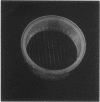Abstract
A new method, fiber fractionation, has been used to isolate and separate cells. The cells are adsorbed to fibers covalently coupled to molecules such as antigens, antibodies, and lectins which can bind specifically to cell-surface components. The cells are then removed mechanically by plucking the taut fibers. Alternatively, competitive inhibitors of binding may be used to remove the cells at a lesser rate. Successful fractionations have been achieved by varying the degree of derivatization of the fibers by the lectin concanavalin A. Lymphoid cells have been separated by the use of different antigens coupled to the fibers. The method may also be used for specific fixation and manipulation of viable cell populations in culture. In addition to fibers, beads and surfaces have been specifically derivatized and used to achieve different geometrical arrangements of the cells.
Keywords: immunology, cell culture, lectins, concanavalin A, erythrocytes
Full text
PDF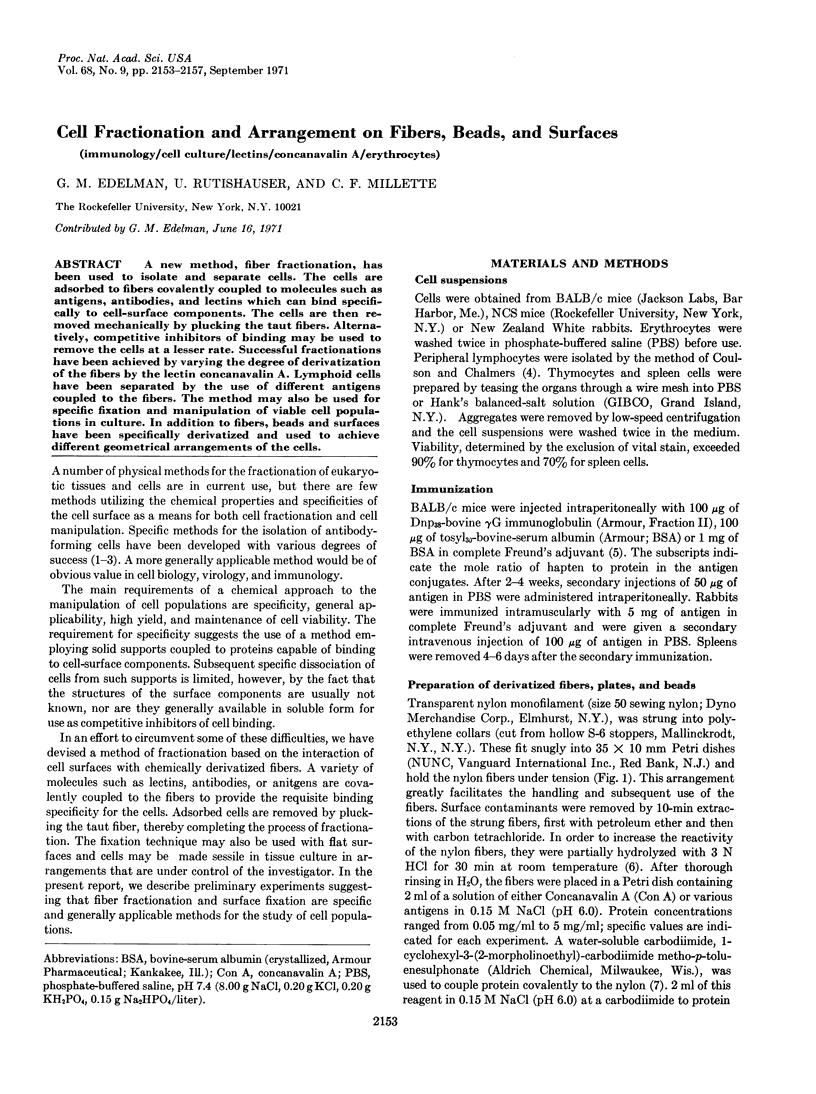
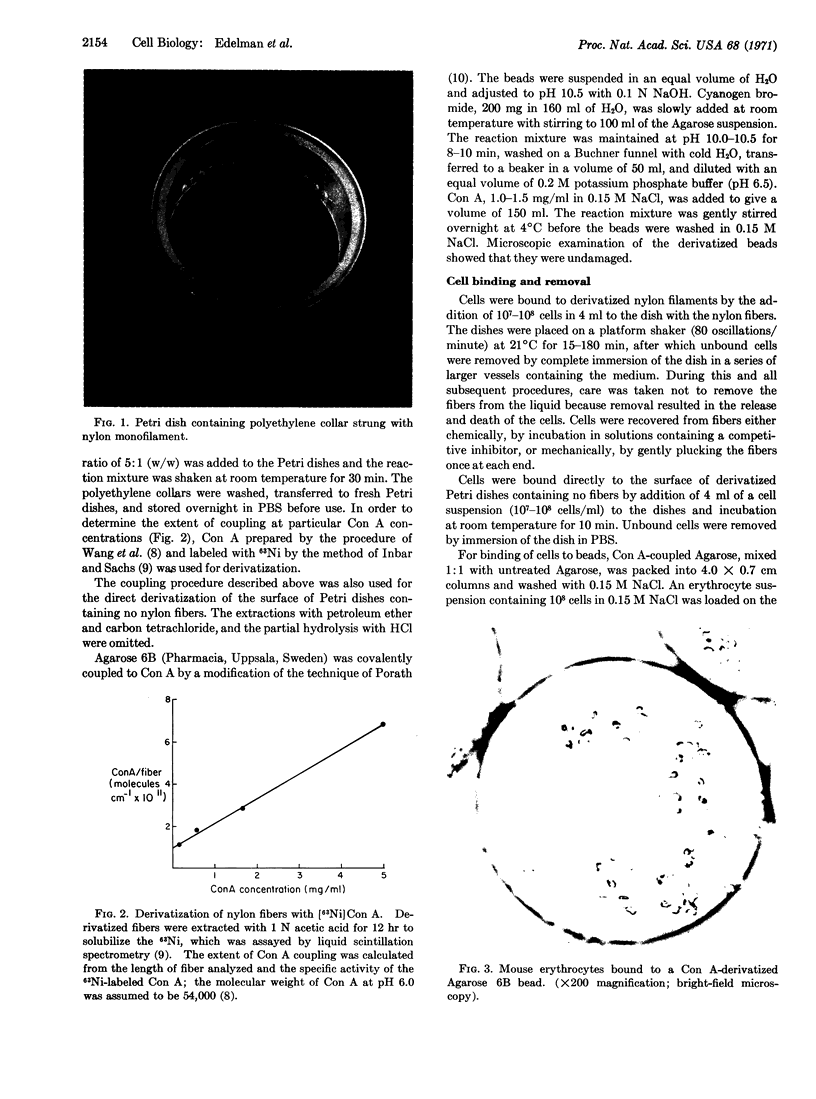
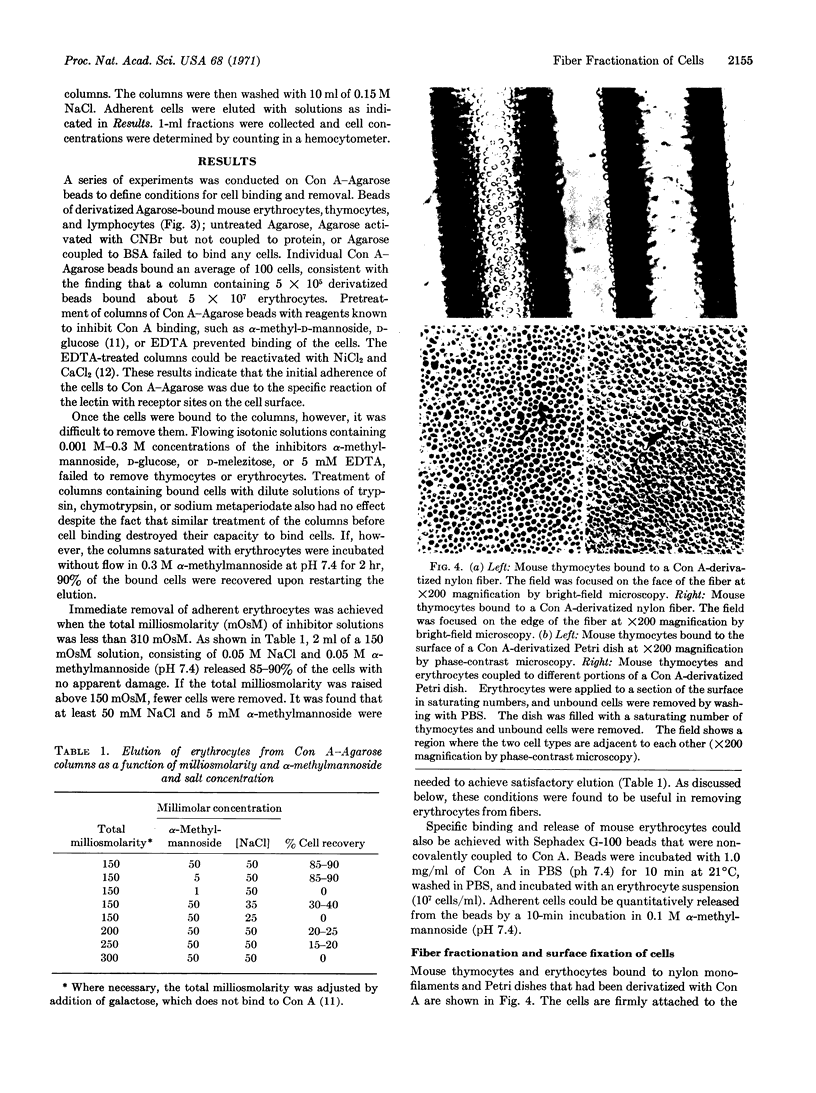
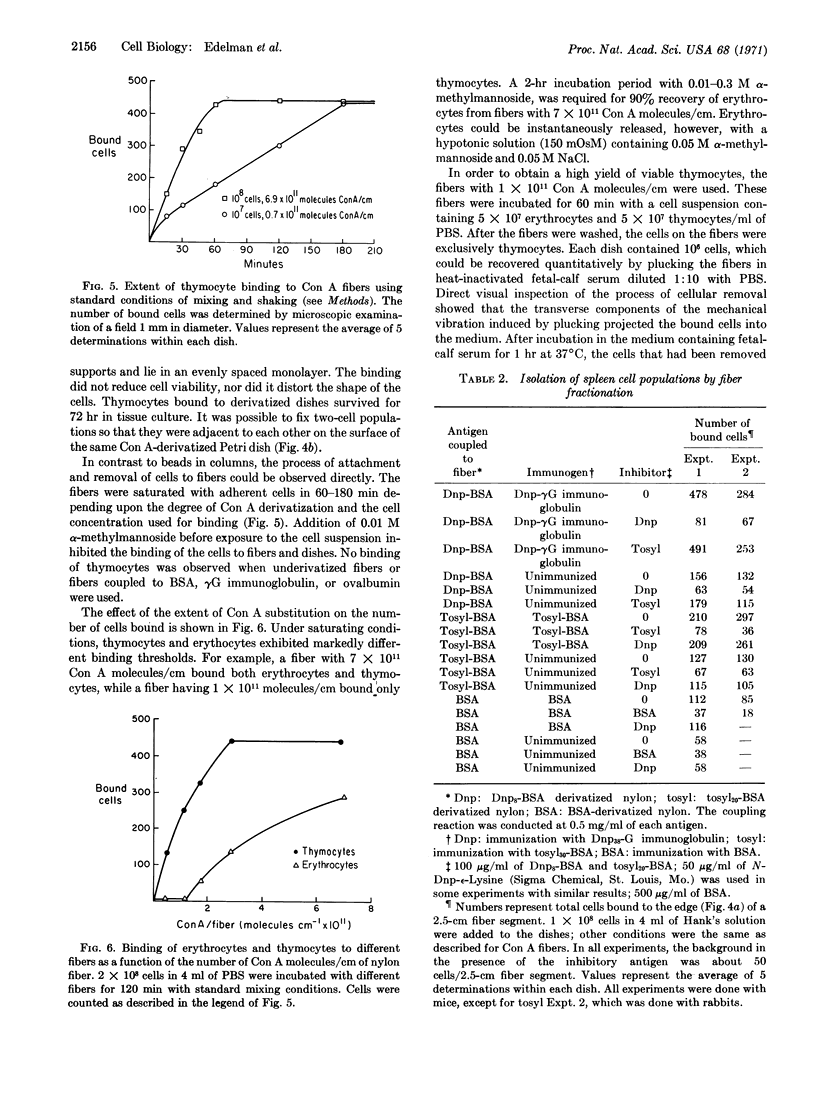
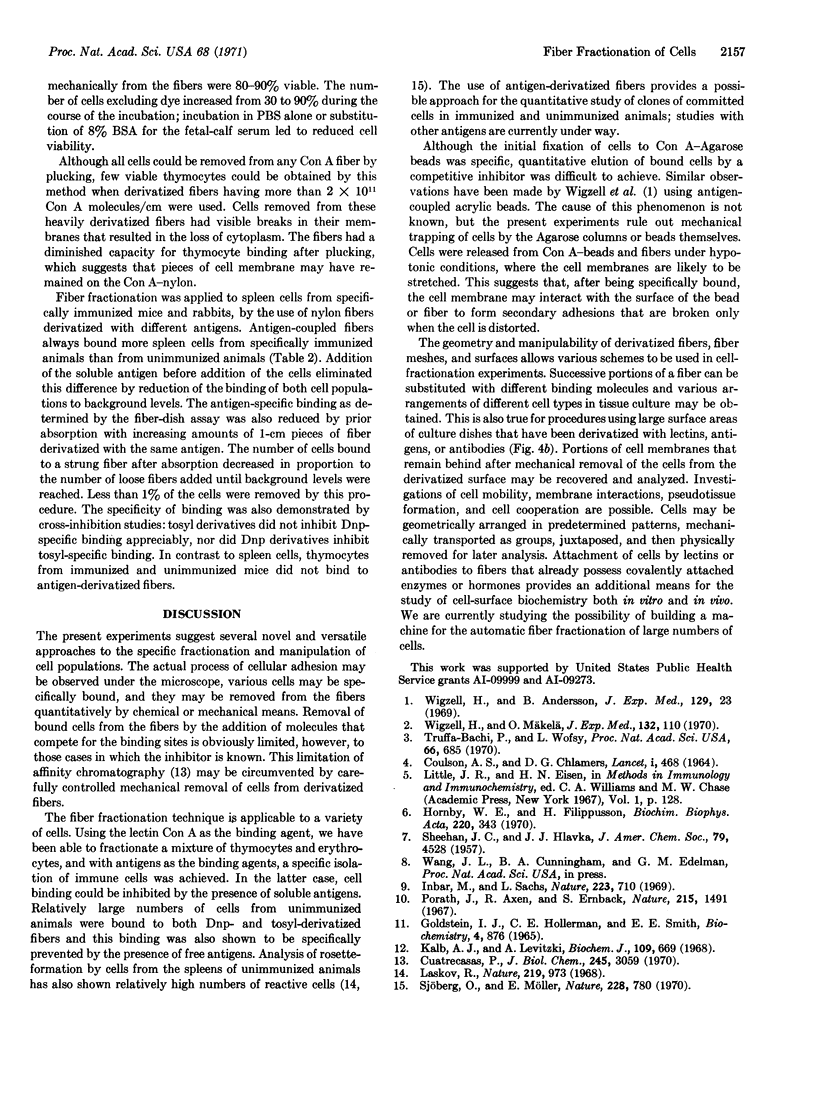
Images in this article
Selected References
These references are in PubMed. This may not be the complete list of references from this article.
- COULSON A. S., CHALMERS D. G. SEPARATION OF VIABLE LYMPHOCYTES FROM HUMAN BLOOD. Lancet. 1964 Feb 29;1(7331):468–469. doi: 10.1016/s0140-6736(64)90799-8. [DOI] [PubMed] [Google Scholar]
- Cuatrecasas P. Protein purification by affinity chromatography. Derivatizations of agarose and polyacrylamide beads. J Biol Chem. 1970 Jun;245(12):3059–3065. [PubMed] [Google Scholar]
- GOLDSTEIN I. J., HOLLERMAN C. E., SMITH E. E. PROTEIN-CARBOHYDRATE INTERACTION. II. INHIBITION STUDIES ON THE INTERACTION OF CONCANAVALIN A WITH POLYSACCHARIDES. Biochemistry. 1965 May;4:876–883. doi: 10.1021/bi00881a013. [DOI] [PubMed] [Google Scholar]
- Hornby W. E., Filippusson H. The preparation of trypsin chemically attached to nylon tubes. Biochim Biophys Acta. 1970 Nov 11;220(2):343–345. doi: 10.1016/0005-2744(70)90020-3. [DOI] [PubMed] [Google Scholar]
- Inbar M., Sachs L. Structural difference in sites on the surface membrane of normal and transformed cells. Nature. 1969 Aug 16;223(5207):710–712. doi: 10.1038/223710a0. [DOI] [PubMed] [Google Scholar]
- Kalb A. J., Levitzki A. Metal-binding sites of concanavalin A and their role in the binding of alpha-methyl d-glucopyranoside. Biochem J. 1968 Oct;109(4):669–672. doi: 10.1042/bj1090669. [DOI] [PMC free article] [PubMed] [Google Scholar]
- Laskov R. Rosette forming cells in non-immunized mice. Nature. 1968 Aug 31;219(5157):973–975. doi: 10.1038/219973a0. [DOI] [PubMed] [Google Scholar]
- Porath J., Axen R., Ernback S. Chemical coupling of proteins to agarose. Nature. 1967 Sep 30;215(5109):1491–1492. doi: 10.1038/2151491a0. [DOI] [PubMed] [Google Scholar]
- Sjöberg O., Möller E. Antigen binding cells in tolerant animals. Nature. 1970 Nov 21;228(5273):780–781. doi: 10.1038/228780a0. [DOI] [PubMed] [Google Scholar]
- Truffa-Bachi P., Wofsy L. Specific separation of cells on affinity columns. Proc Natl Acad Sci U S A. 1970 Jul;66(3):685–692. doi: 10.1073/pnas.66.3.685. [DOI] [PMC free article] [PubMed] [Google Scholar]
- Wigzell H., Andersson B. Cell separation on antigen-coated columns. Elimination of high rate antibody-forming cells and immunological memory cells. J Exp Med. 1969 Jan 1;129(1):23–36. doi: 10.1084/jem.129.1.23. [DOI] [PMC free article] [PubMed] [Google Scholar]
- Wigzell H., Mäkelä O. Separation of normal and immune lymphoid cells by antigen-coated coated columns. Antigen-binding characteristics of membrane antibodies as analyzed by hapten-protein antigens. J Exp Med. 1970 Jul 1;132(1):110–126. doi: 10.1084/jem.132.1.110. [DOI] [PMC free article] [PubMed] [Google Scholar]



